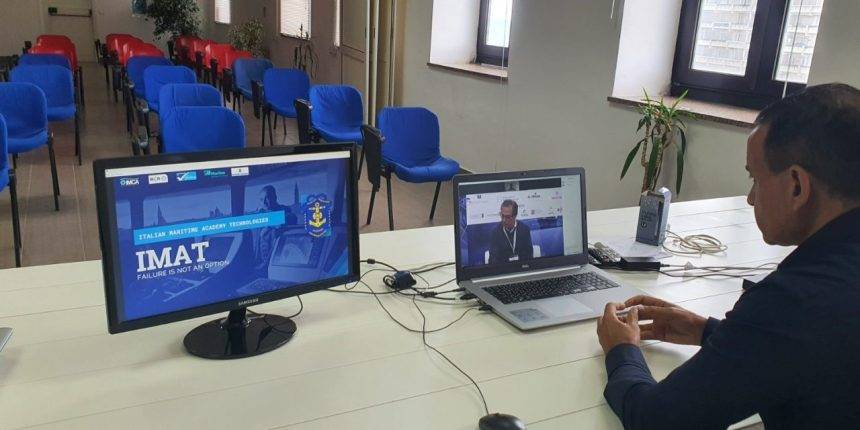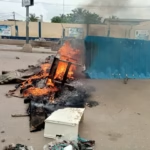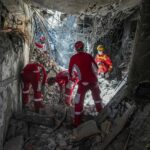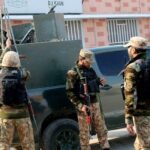The near future of the energy transition will be varied. Not a single solution will emerge but rather a combination of sources and technologies that will adapt to the unique characteristics of the various economic sectors. This is what was reported by the latest edition of the World Energy Outlook of the IEA (International Energy Agency) according to which by 2040 low-carbon sources will be monopolized by photovoltaics (half of production) and LNG (for a third).
With a growth rate of the total energy requirement of 1% expected in the next twenty years, liquefied natural gas will revolutionize the transport sector in particular, the only one in which the specific demand for this raw material will be constantly increasing in the period taken into account consideration (2020-40). Among the factors that will fuel this trend in the maritime sector, undoubtedly the entry into force, starting from next year, of the mandatory use of fuels with low sulfur content. Decision, in line with the guidelines of the Paris Agreements, which induced the shipping industry to aim more and more decisively towards gas propulsion solved (or in the process of being resolved).

The main technological problems related to the installation of tanks are larger than traditional ones, important segments such as container and passenger transport, both scheduled and cruise, have taken this path. Just think, for example, of the 18 container ships under construction for CMA CGM or the recent delivery of the Costa Smeralda, the first flagship of the Costa Cruises group to exploit gas propulsion.
IMAT TECHNOLOGY
A radical change that will also affect the crews, called to deal with the new needs that will emerge, at all levels, from the management of unprecedented operational processes. It is with this in mind that IMAT – Italian Maritime Academy Technologies has launched a specific training and training program for maritime personnel in service on ships subject to the IGF Code – Liquefied Natural Gas. The new course, as outlined by Decree 875/2017 of the General Command of the Port Authority Corps, defines the perimeter of knowledge and training necessary in the management and operation of systems based on gas or other fuels with a low point of flammability as well as knowledge of the relative aspects of safety, emergency and environmental protection related to the phases of handling, storage and use of the same fuels.

“The need for specific preparation for the crews called upon to deal with all the operational aspects related to the application of this new technology was codified in time by the IMO,” explains Fabrizio Monticelli , Sole Director of IMAT – Italian Maritime Academy Technologies . “The new training offer, following a common approach to all our courses, aims to equip the seafarer with the skills required on the subject, while providing a portfolio of additional knowledge that allows them to better interpret the changes in the overall operating context”.
Intended for captains, directors, officers, municipalities and any other personnel serving on board ships subject to the IGF code, the training is divided into a basic course of 24 hours (8 hours of lessons for a total of three days), an advanced one. of 40 hours (five days in total) and in the respective “refresh courses” scheduled every five years. At the end of a series of technical checks, the certification process includes three specific areas of knowledge, training and tests: theoretical-conceptual, technical-practical, simulations, with ad hoc exercises. This last point, in particular, was at the center of an intense work of implementation of the support software conducted in collaboration with Wartsila, strategic partner of IMAT.
“A common effort to respond to the technical specifications dictated by the Ministry (among these, the simulation of operations related to bunkering by truck, barge and on shore facility, ed) which confirms the ability of our policies to respond in a flexible, efficient and timely to the needs of the shipping industry, ”underlines Monticelli.
NEXT NORMAL, IMAT WILL ALSO MAKE ITS CONTRIBUTION
With the authorization of the face-to-face events, a new season of public debate was inaugurated. Workshops, conferences, seminars are following one another without interruption to outline the near future of Italy. Even the scenarios of the maritime sector are analyzed to define the actions to be taken to address the “new normal” of the post-COVID world. Energy transition, technological changes, the fight against climate change is just some of the themes of general interest that intersect with the evolution of shipping.
EXCHANGE IDEAS FOR BETTER RESULTS
IMAT is also actively participating in this exchange of ideas, bringing the particular point of view of the world of maritime training with Corso IMAT. In a context in which cycles of change are accelerating, the experience and skills gained by the sector will prove invaluable in bridging the wide gap between supply and demand that characterizes the Italian labor market. All the more in a sector, such as that of navigation, aimed at hyper-specialization.
Cap. Rosario Trapanese recently spoke about the role of training centers, ship-owners and crews . Speaking at the Blue Economy Summit event, he underlined, in particular, the change in maritime culture necessary to be able to guarantee ever higher professionalism and performance . From the introduction of LNG propulsion to the exploitation of polar areas, to the development of wind farms, a range of job opportunities is opening up both in Italy and abroad.
“The training will change according to the operational characteristics of the ships,” explained Trapanese. “In the next few years, just to give an example, DP – Dynamic Positioning will become more and more relevant, even outside the traditional applications in the offshore sector, especially for those passenger vessels that will sail waters in which it is not possible to give the fund . Hence the need for greater attention in educational programs to ensure higher professionalism for Italian technicians”.
Being able to seize these new opportunities will depend on the ability of all the players in the field to align themselves with the sudden transformations taking place. In this process, the training centers will increasingly determine themselves as territorial innovation poles , by virtue of the investments made to raise the technological level of the equipment and the didactic quality of the offer. A path, at the direct service of the competitiveness of our fleets, which IMAT has taken since the beginning of its adventure.














